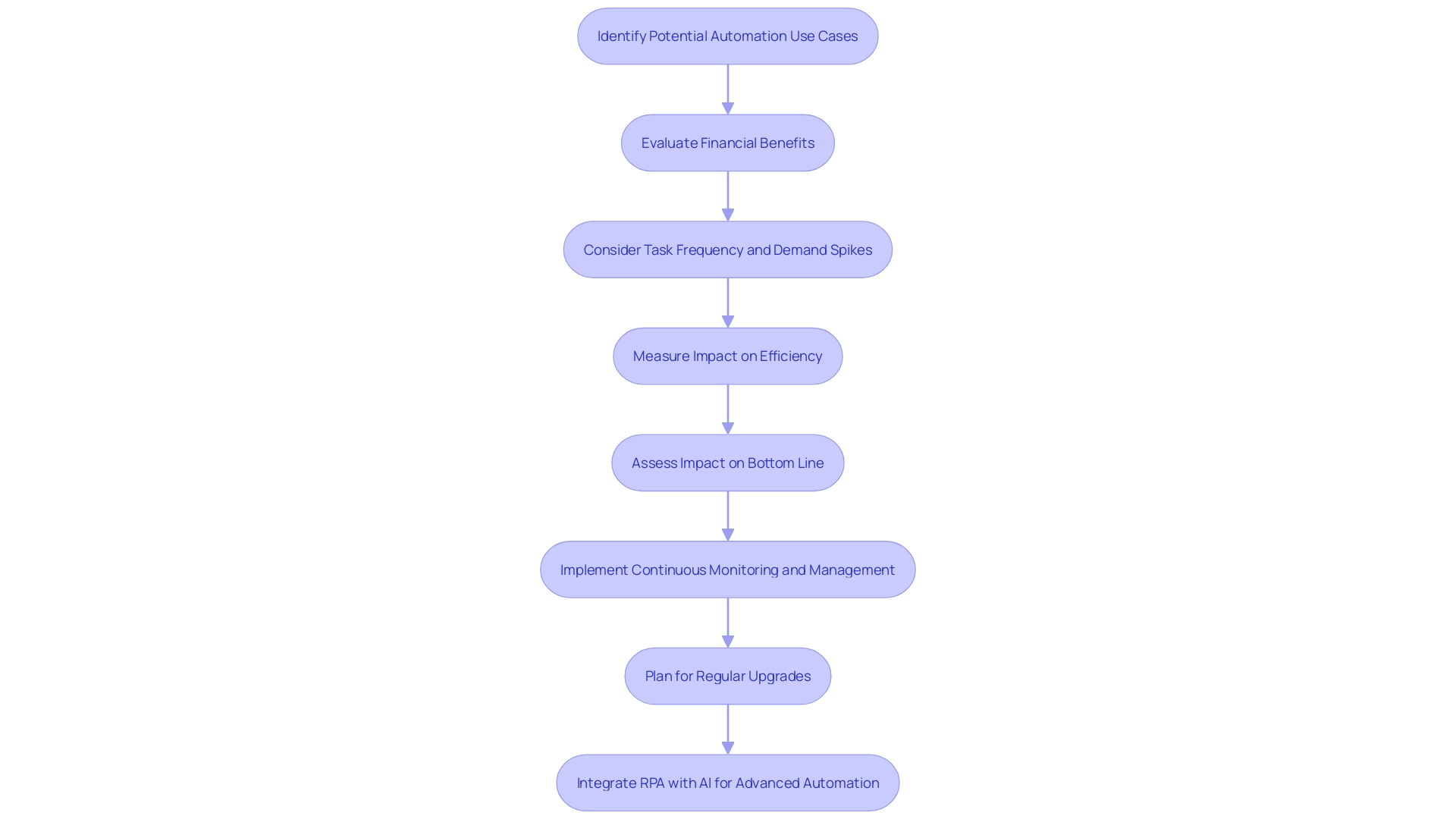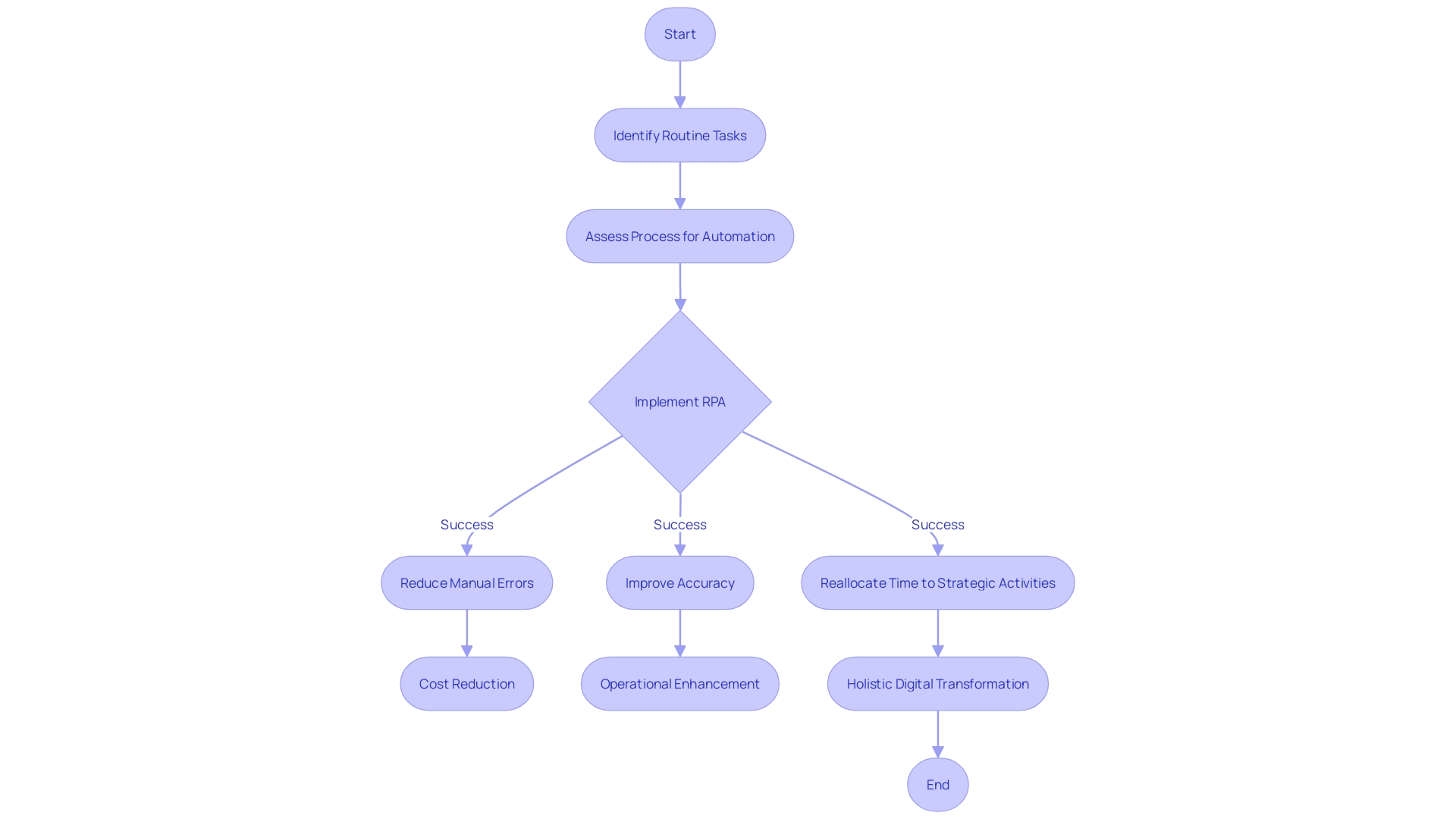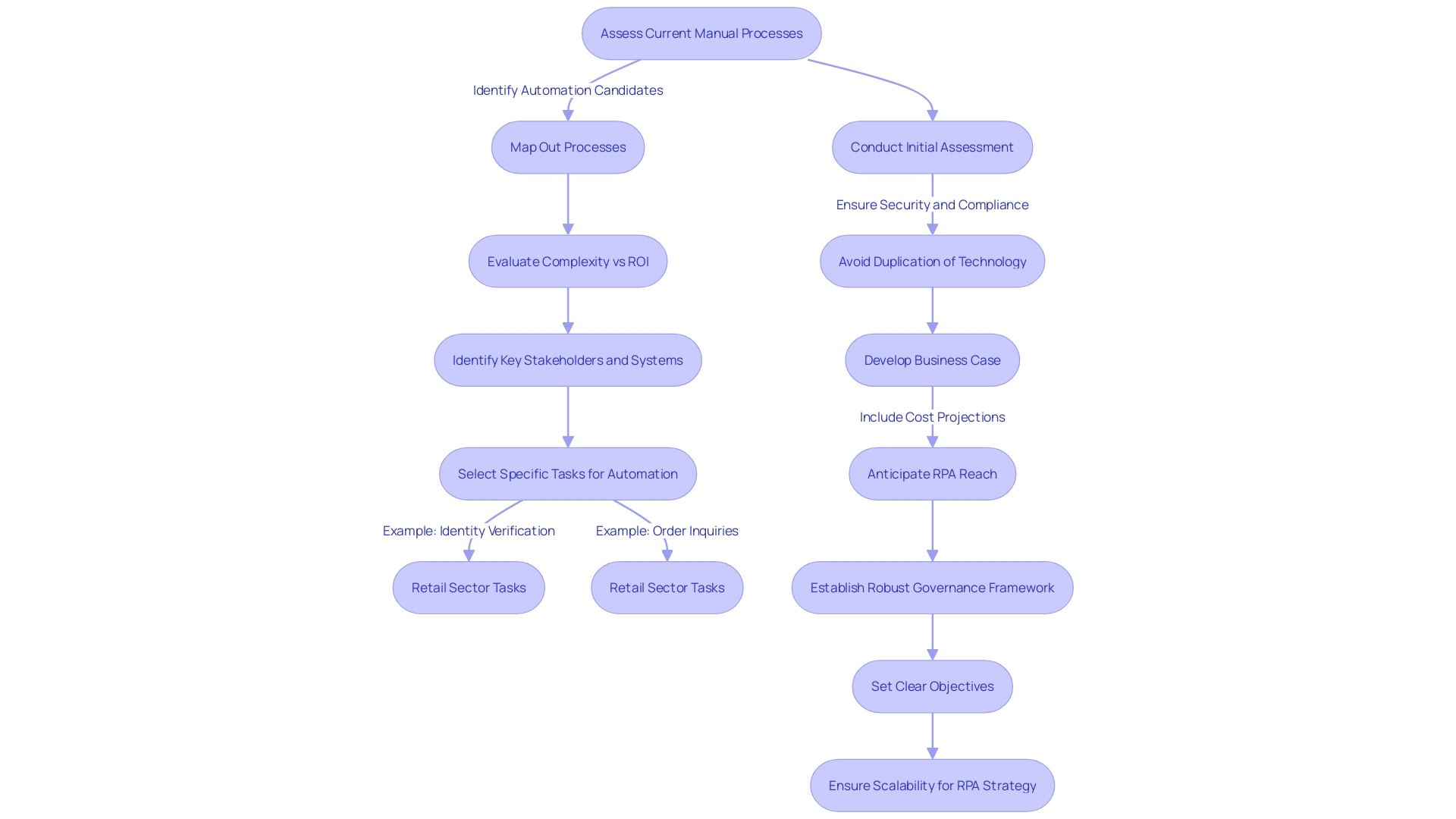Introduction
Robotic Process Automation (RPA) has revolutionized the way organizations operate by enhancing efficiency and streamlining operations. However, the cost of RPA deployment is not uniform and is influenced by various factors.
In this article, we will explore the factors that influence the cost of RPA and how organizations can evaluate automation use cases to maximize its value. We will also delve into real-world examples of RPA cost savings and the role of Artificial Intelligence (AI) in enhancing RPA efficiency.
Additionally, we will discuss the limitations of RPA and the need for intelligent automation. Finally, we will provide strategic considerations for organizations looking to adopt RPA, emphasizing the importance of a comprehensive assessment, mapping processes, and developing a business case. By the end of this article, you will have a clear understanding of the key aspects to consider when implementing RPA and how it can drive digital transformation within your organization.
Factors Influencing the Cost of Robotic Process Automation
As we navigate the digital era, Robotic Process Automation (RPA) has become a vital component for enhancing operational efficiency across various sectors. Mastering RPA is akin to mastering the art of automation, setting a clear path toward rapid and efficient task completion. However, the cost of RPA deployment is not uniform; it is influenced by a multitude of factors that require careful consideration.
Employee resistance is one such hurdle, often stemming from a lack of understanding or fear of change, which can impede the adoption of RPA. To truly harness the power of RPA, it's crucial to delve into the art of evaluating automation use cases within frameworks like the Power Platform. Like Stark Industries' innovative technology, your approach should be as strategic and precise.
The criteria for assessing automation's value are multifaceted, ranging from the frequency of task execution and the potential financial benefits to anticipating demand spikes and the structure of digital data leveraged. Quantifying the potential monetary value of automation is straightforward: compare the time an individual spends completing a process manually versus the time taken post-automation. This assessment reveals the profound impact that RPA can have on an enterprise's efficiency and bottom line.
As stated by industry experts, RPA is a transformative wave of technology that employs software bots to perform tasks such as data entry, transaction processing, and customer service interactions. The integration of these bots across applications and platforms liberates employees from mundane tasks, allowing them to focus on value-added activities. However, automation is not a set-and-forget solution; it requires continuous monitoring, management, and upgrades, highlighting the need for a human-AI partnership.
The implementation of RPA should start with small steps, prioritizing time-intensive tasks and utilizing a well-curated library of tools. Continuous monitoring and documentation of results are imperative for measuring success and informing future projects. As intelligent automation evolves, combining RPA with AI, businesses can streamline processes, amplify efficiency, and make more strategic decisions, driving their digital transformation forward.

Case Study: RPA in Purchasing and Supply Management
Robotic Process Automation (RPA) has revolutionized purchasing and supply management by streamlining operations and enhancing efficiency. In the realm of procurement, RPA's ability to automate routine tasks such as order processing and invoice reconciliation has been particularly transformative.
By adopting RPA, companies are not only reducing the incidence of manual errors but also significantly improving accuracy. This shift allows procurement professionals to reallocate their time towards strategic activities that add greater value to the organization.
A compelling case study illustrates the impact of RPA deployment in a company's purchasing department. After integrating RPA, the company witnessed substantial cost reductions alongside operational enhancements.
By leading with a focus on problem-solving, people, and processes – and then incorporating technology, the organization's team achieved remarkable success. Jon W. Hansen, a leading procurement voice, emphasizes that success is contingent on this strategy over a purely technology-driven approach. The case further demonstrates that while technology has advanced considerably over the years, its effective leverage remains a challenge for many. The key takeaway is the necessity of a holistic approach that prioritizes meaningful engagement with technology, such as AI, to realize the full potential of digital transformation initiatives in procurement.

The Role of AI in Enhancing RPA Efficiency
The synergy of Artificial Intelligence (AI) with Robotic Process Automation (RPA) is revolutionizing the way organizations handle repetitive tasks. AI, with its ability to mimic human intelligence and improve over time, is taking RPA to new heights.
By integrating AI components such as natural language processing and machine learning, RPA bots can now tackle more nuanced assignments, interpret complex data, and make decisions that were once reliant on human judgment. For instance, automating identity verification and simple order inquiries, which are common starting points for many companies, becomes significantly more efficient.
AI-enabled RPA can discern and respond to customer queries like "Where is my order?" without human intervention. This not only streamlines operations but also impacts the cost of RPA implementation by potentially reducing the need for additional personnel. As AI continues to evolve, the boundary of what can be automated expands, allowing organizations to identify new areas for cost-effective RPA application, with an eye on both complexity and estimated return on investment.
RPA Limitations and the Need for Intelligent Automation
Robotic Process Automation (RPA) brings efficiency and streamlined operations to the forefront, but it's not a silver bullet. As history shows, from the water wheel to AI, automation has always required careful oversight, adjustment, and enhancement.
The synergy of RPA with AI is no exception. Blending the repetitive task efficiency of RPA with Ai's decision-making capabilities can lead to transformative outcomes, enhancing processes and bolstering informed decision-making.
However, successful implementation is not without its challenges. Resistance from employees, a natural part of introducing new technologies, must be addressed.
The journey from development to widespread adoption of intelligent automation mirrors the arduous path of new drug approvals—rigorous testing and convincing both end-users and stakeholders of its value are critical steps. For organizations embarking on this path, starting with smaller, manageable tasks is advisable. As they build their library of automation tools and tackle more complex workflows, continuous monitoring and documentation of results become invaluable. This not only ensures goals are met but also captures vital learnings for future endeavors. Intelligent automation isn't simply about RPA; it's about crafting a strategic approach that marries the technology with human insight to push the boundaries of what's possible in digital transformation.
Real-World Examples of RPA Cost Savings
Real-world examples provide valuable insights into the cost-effectiveness of Robotic Process Automation (RPA). Consider the case where RPA has been leveraged to automate identity verification and simple customer inquiries.
This has been a starting point for many retailers, streamlining the process while improving customer satisfaction. Customers who experience swift and accurate responses tend to remain loyal, a critical factor for the growth of small businesses.
Moreover, as companies scale, RPA can be instrumental in ensuring operations expand smoothly without sacrificing service quality. Another aspect to consider is the process mapping, which involves identifying stakeholders and systems, such as inventory management and online shopping software.
This step is crucial before integrating RPA, as it helps determine the complexity and potential return on investment. Often, the most significant gains are realized from automating low-complexity tasks.
The idea is not to chase after the most advanced possibilities but to secure quick wins that can deliver immediate benefits. Leadership plays a pivotal role in the decision-making process for RPA implementation. Questions such as which manual processes to automate, the inefficiencies to address, and the time and cost implications of integrating RPA software are fundamental. Additionally, establishing a library of tools to support automation and starting with simpler tasks can pave the way for tackling more complex workflows. Continuous monitoring and documentation of results are imperative for assessing the effectiveness of RPA and guiding future projects. The synergy between RPA and Artificial Intelligence (AI) has been identified as transformative, enabling companies to enhance their processes, boost efficiency, and make more data-driven decisions, ultimately leading to successful digital transformation.
Strategic Considerations for RPA Adoption
As businesses evolve, the imperative to modernize through automation becomes a strategic priority. The journey toward integrating Robotic Process Automation (RPA) should commence with a comprehensive assessment of current manual processes to identify prime candidates for automation.
By pinpointing specific inefficiencies, organizations can determine which procedures would benefit most from RPA, thereby optimizing the investment in terms of time and cost required for integration. A prudent approach involves mapping out the processes, identifying key stakeholders and systems involved, and evaluating the complexity against the potential return on investment (ROI).
Simple, low-complexity tasks often yield the most immediate benefits. For instance, automating identity verification and basic order inquiries can quickly enhance customer service efficiency in retail sectors.
To ensure that the digital solutions adopted are secure, appropriate, and compliant, a rigorous initial assessment is vital. This includes checking for existing technologies within the organization that could address the needs, thus avoiding unnecessary duplication.
In the healthcare sector, for example, the NHS's experience has demonstrated the value of digging deeper to uncover pre-existing solutions within the trust before proceeding with new requests for technology. Furthermore, developing a business case, such as using tools like the Business Case Calculator for Microsoft 365 Copilot, helps organizations establish a baseline for potential investments. While traditional business cases may focus predominantly on costs, they are essential for securing buy-in from key decision-makers. Projections such as Microsoft 365 Copilot's anticipated reach of 6.9 million US knowledge workers by 2024 underscore the importance of strategic planning for RPA adoption. In conclusion, a robust governance framework, clear objectives, and a scalable solution are the hallmarks of a successful RPA strategy. These elements, combined with informed leadership and a thorough understanding of modernization benefits and challenges, are key to driving long-term value from RPA implementation.

Conclusion
In conclusion, the cost of Robotic Process Automation (RPA) deployment is influenced by various factors that require careful consideration. Factors such as employee resistance, evaluating automation use cases, and quantifying potential monetary value play a crucial role in determining the cost-effectiveness of RPA. Real-world examples have demonstrated the significant cost savings and operational enhancements that can be achieved through RPA implementation.
By automating routine tasks and streamlining processes, organizations can improve efficiency, accuracy, and customer satisfaction. The integration of Artificial Intelligence (AI) with RPA further enhances its efficiency by enabling bots to handle more complex assignments and make decisions previously reliant on human judgment. This synergy expands the scope of automation possibilities and reduces the need for additional personnel.
However, it's important to recognize the limitations of RPA and the need for intelligent automation. Overcoming employee resistance, adopting a holistic approach that combines technology with human insight, and continuous monitoring are essential for successful implementation. Strategic considerations for RPA adoption include conducting a comprehensive assessment of current manual processes, mapping out workflows, evaluating complexity against potential ROI, and developing a business case.
A robust governance framework, clear objectives, informed leadership, and scalability are key elements for driving long-term value from RPA implementation. In conclusion, organizations must carefully evaluate the factors influencing the cost of RPA deployment to maximize its value and drive digital transformation within their operations. By leveraging RPA strategically and integrating AI capabilities, businesses can achieve significant cost savings while enhancing efficiency and making more data-driven decisions.
Ready to automate and streamline your business processes? Contact us today for a consultation!





